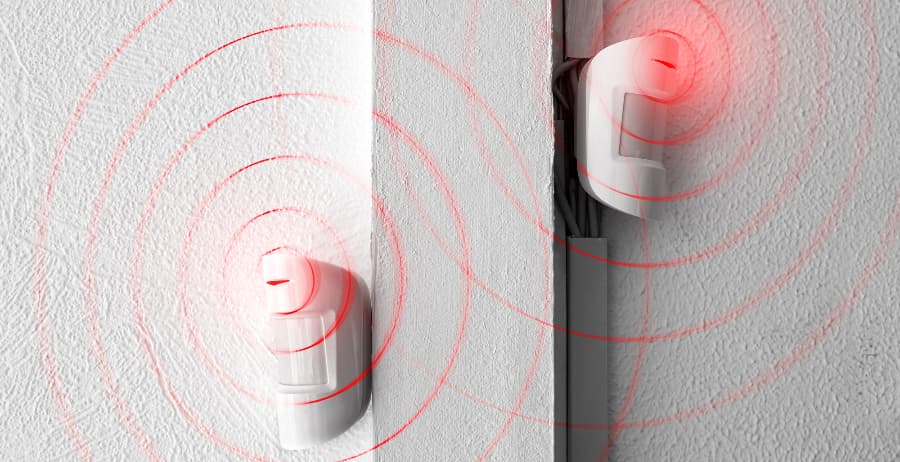How to reduce motion sensor false alarms in your Baton Rouge home

Motion sensors are critical aspects in a comprehensive home security plan, as they’ll let you know if an unwelcome guest is sneaking around your house. Regrettably, they’re also susceptible to false alarms, causing Baton Rouge homeowners to lose sleep. If you’re trying to find solutions, review our suggestions for reducing motion sensor false alarms.
What triggers motion detector false alarms?
Most residential motion detectors utilize passive infrared (PIR) technology to find movement. They monitor changes in infrared radiation within their detection zone and can recognize when someone is moving by their heat signature. False alarms are typically initiated by:
- Pets climbing on furniture or tabletops
- Bright sunlight streaming through a window
- A variety of heat sources, such as vents and fireplaces
- Sudden temperature or humidity changes, which cause devices to be hypersensitive or non-functional
Microwave motion sensors are an additional frequently used option that discovers motion by continually emitting and analyzing electromagnetic waves. Called active motion detectors, they pinpoint movement due to alterations in the reflected signal. Any unexpected motion, like curtains shifting when an HVAC fan turns on, can initiate an alarm.
Ideas for reducing motion sensor false alarms at your Baton Rouge home
Aside from losing sleep, motion sensor false alarms are even more disruptive as they may desensitize you to real threats. Furthermore, frequent false alarms can become an annoyance for local law enforcement and may influence response times in the future. Fortunately, you can help prevent them by adhering to these recommendations:
- Check the sensitivity settings of your equipment and adjust to your pet’s size and behavior.
- Avoid aiming them at high-traffic spots like feeding stations, even when you have pet-sensitive detectors.
- Avoid directing motion sensors at windows receiving intense sunlight.
- Ensure rooms are adequately insulated to prevent temperature shifts.
- Periodically dust and wipe off devices to keep sensors working properly.
- Inspect batteries and change as needed. Many motion sensors will even tell you when batteries are getting low.
- Let a pro do the installation to ensure proper placement.
You might also opt for hybrid devices that use both passive and active tools to identify movement, leading to improved accuracy.
How to incorporate motion sensors into your Baton Rouge smart home?
Installing motion sensors in an automated smart home is a terrific way to enhance your security and convenience. You’ll have the opportunity to do the following:
- Obtain instant notifications on your smartphone whenever motion is detected. You might also use them to alert you when your little ones get home from school.
- Have indoor cameras to record any time a motion sensor is tripped.
- Change lighting or temperature settings based on your home’s occupancy. This feature can help reduce energy costs.
Leading smart home devices, like the models from Vivint, continue to harness artificial intelligence (AI) to more effectively detect actual threats and minimize false alarms.
Design your Vivint smart home with advanced motion sensors
Get the best motion sensors in Baton Rouge from Vivint when you plan your fully integrated smart home. Our sensors are animal-sensitive and permit you to initiate various automation actions. You’ll also enjoy a five-year battery and immediate smartphone notifications. Reach out to (225) 725-8055 today to learn more.